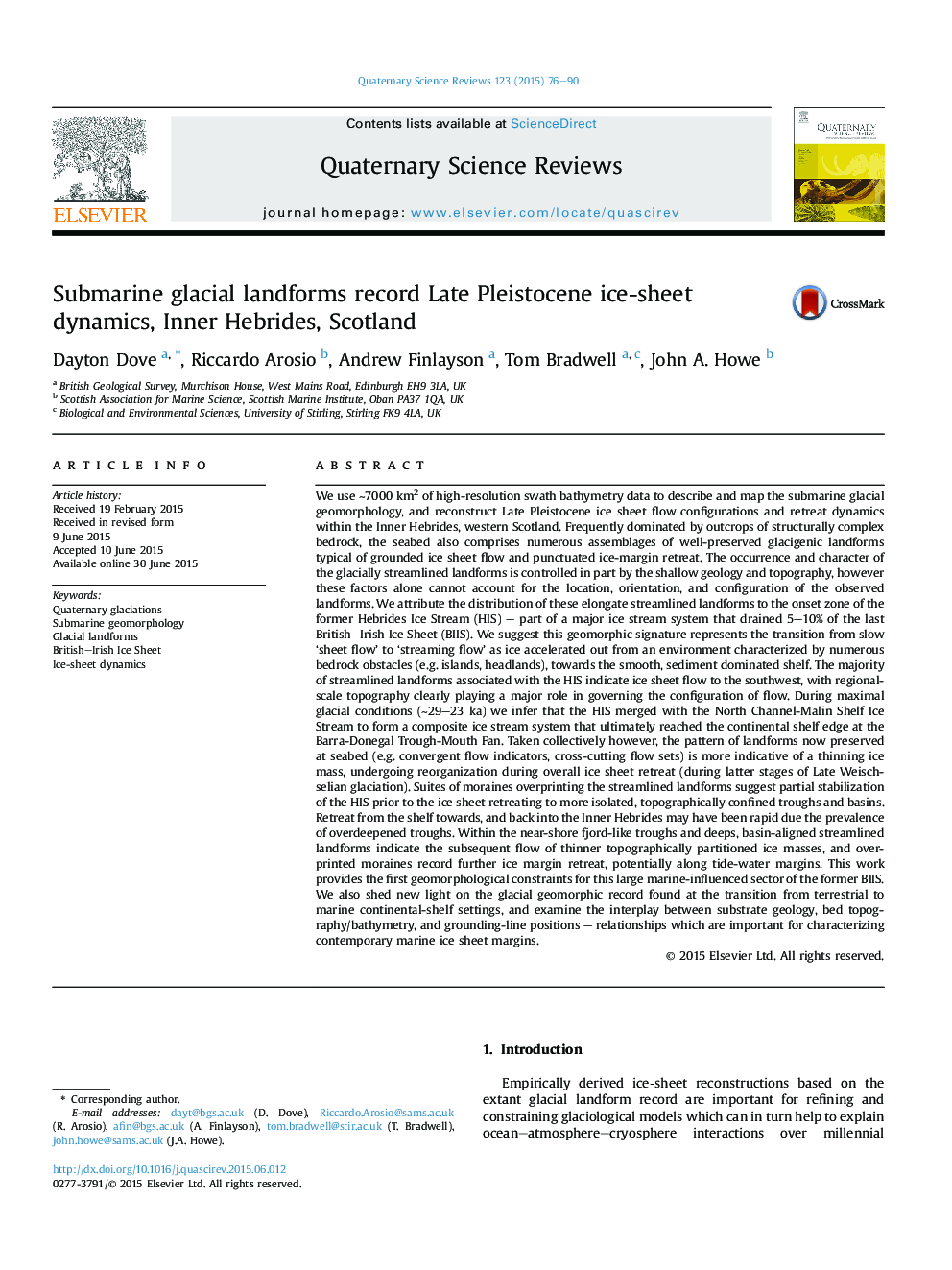| کد مقاله | کد نشریه | سال انتشار | مقاله انگلیسی | نسخه تمام متن |
|---|---|---|---|---|
| 4735287 | 1640811 | 2015 | 15 صفحه PDF | دانلود رایگان |
• New, extensive bathymetry data presented for Inner Hebrides, western Scotland.
• Ubiquitous glacial landforms constrain regional ice sheet flow and retreat dynamics.
• Evidence for functioning, and subsequent deactivation of prominent Hebrides Ice Stream.
• Evidence for later, topographically confined flow and retreat in near-shore troughs.
• Implications for British–Irish Ice Sheet and similar marine-occupying ice sheets discussed.
We use ∼7000 km2 of high-resolution swath bathymetry data to describe and map the submarine glacial geomorphology, and reconstruct Late Pleistocene ice sheet flow configurations and retreat dynamics within the Inner Hebrides, western Scotland. Frequently dominated by outcrops of structurally complex bedrock, the seabed also comprises numerous assemblages of well-preserved glacigenic landforms typical of grounded ice sheet flow and punctuated ice-margin retreat. The occurrence and character of the glacially streamlined landforms is controlled in part by the shallow geology and topography, however these factors alone cannot account for the location, orientation, and configuration of the observed landforms. We attribute the distribution of these elongate streamlined landforms to the onset zone of the former Hebrides Ice Stream (HIS) – part of a major ice stream system that drained 5–10% of the last British–Irish Ice Sheet (BIIS). We suggest this geomorphic signature represents the transition from slow ‘sheet flow’ to ‘streaming flow’ as ice accelerated out from an environment characterized by numerous bedrock obstacles (e.g. islands, headlands), towards the smooth, sediment dominated shelf. The majority of streamlined landforms associated with the HIS indicate ice sheet flow to the southwest, with regional-scale topography clearly playing a major role in governing the configuration of flow. During maximal glacial conditions (∼29–23 ka) we infer that the HIS merged with the North Channel-Malin Shelf Ice Stream to form a composite ice stream system that ultimately reached the continental shelf edge at the Barra-Donegal Trough-Mouth Fan. Taken collectively however, the pattern of landforms now preserved at seabed (e.g. convergent flow indicators, cross-cutting flow sets) is more indicative of a thinning ice mass, undergoing reorganization during overall ice sheet retreat (during latter stages of Late Weischselian glaciation). Suites of moraines overprinting the streamlined landforms suggest partial stabilization of the HIS prior to the ice sheet retreating to more isolated, topographically confined troughs and basins. Retreat from the shelf towards, and back into the Inner Hebrides may have been rapid due the prevalence of overdeepened troughs. Within the near-shore fjord-like troughs and deeps, basin-aligned streamlined landforms indicate the subsequent flow of thinner topographically partitioned ice masses, and overprinted moraines record further ice margin retreat, potentially along tide-water margins. This work provides the first geomorphological constraints for this large marine-influenced sector of the former BIIS. We also shed new light on the glacial geomorphic record found at the transition from terrestrial to marine continental-shelf settings, and examine the interplay between substrate geology, bed topography/bathymetry, and grounding-line positions – relationships which are important for characterizing contemporary marine ice sheet margins.
Journal: Quaternary Science Reviews - Volume 123, 1 September 2015, Pages 76–90
